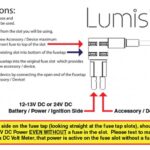In the past, adding features to a Mercedes-Benz was as simple as plugging in new hardware. The wiring harness was standardized across models for a given year, making upgrades relatively straightforward. However, modern Mercedes vehicles are built with customized wiring harnesses, tailored specifically to the features included from the factory. This shift has made retrofitting options significantly more complex.
Today’s Mercedes-Benz operating systems are increasingly linked to the vehicle’s unique VIN (Vehicle Identification Number). This means that previously accessible coding modifications, often handled through Star/Xentry diagnostic systems, are now often restricted. Even seemingly simple tasks, like rectifying corrupted climate control coding, might require specific unlock codes tied to the VIN and obtained directly from Mercedes-Benz. This often necessitates online access and interaction with Mercedes-Benz servers, a process that can be notoriously slow. The reliance on cloud-based systems for coding and programming changes is becoming the norm.
Looking ahead, the next generation of Mercedes-Benz vehicles promises a more streamlined approach. Direct, remote updates via the cloud are being designed to allow for at-home or in-office modifications and upgrades. This eliminates the need for dealer visits for certain coding procedures, offering greater convenience for owners.
Despite these changes, specialized coding tools still offer some flexibility. Certain aftermarket OBD (On-Board Diagnostics) coding modules, particularly those from European developers, can unlock or modify specific features depending on the year and model of the Mercedes. These “Mercedes Coding Tools” provide an alternative for those seeking customization beyond factory settings. The evolution of coding and programming within the Mercedes-Benz ecosystem continues to unfold, promising further advancements in vehicle personalization and functionality.

